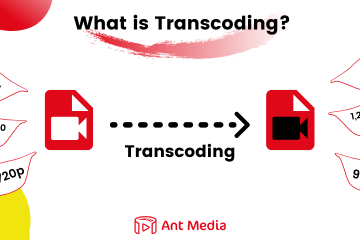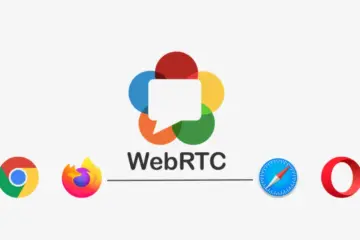In today’s digital world, content delivery methods have evolved dramatically. Two of the most commonly discussed technologies are broadcasting and streaming, but they are different.
While both involve transmitting video and audio to audiences, their mechanisms, use cases, and advantages differ significantly. Understanding the differences between broadcasting and streaming is crucial for businesses, content creators, and consumers alike.
In this guide, we’ll break down these two technologies, explore their applications, and discuss why Ant Media Server is a powerful solution for modern streaming needs.
What is Broadcasting?
Broadcasting is a traditional method of transmitting content to a large audience simultaneously. It operates via radio waves, satellite, cable, or antennas, delivering content without an internet connection. Television and radio broadcasting are classic examples where content is sent from a central source to multiple receivers.
How Does Broadcasting Work?
A broadcasting station transmits a signal via a transmission tower, satellite, or cable network. These signals reach homes, cars, and mobile devices through antennas or cable connections. Unlike streaming, which allows for on-demand access, broadcasting follows a fixed schedule, making it suitable for live sports, news, and TV programming.
Types of Broadcasting
1. Radio Broadcasting
Radio broadcasting transmits audio signals to a broad audience using AM/FM or digital signals. It remains popular due to its accessibility and reach, particularly in regions with limited internet infrastructure.
2. Television Broadcasting
Television broadcasting delivers video and audio content via satellite, cable, or over-the-air (OTA) signals. Major networks use this method to broadcast live events, entertainment, and news.
3. Satellite Broadcasting
Satellite broadcasting transmits signals from a central station to a satellite, which then relays them to user receivers. This method is effective for global content distribution.
4. Cable Broadcasting
Cable broadcasting delivers content via fiber-optic or coaxial cables, offering subscribers a wide range of channels and services.
5. Internet Broadcasting (Webcasting)
Internet broadcasting, or webcasting, allows users to watch live or recorded content online, similar to streaming but with scheduled programming. This method is widely used for webinars and online radio stations.
What is Streaming?
Streaming refers to the real-time delivery of digital content via the internet. Instead of downloading an entire file before playback, data is delivered in chunks, enabling continuous viewing. Netflix, YouTube, and live sports streams are prime examples of streaming in action.
How Does Live Streaming Work?
Streaming relies on an encoder, a content delivery network (CDN), and a media player to deliver real-time content. The process involves:
- Compression: Reducing file size for efficient transmission.
- Encoding: Converting raw video into a digital format (e.g., H.264, H.265).
- Segmentation: Breaking content into small chunks for adaptive bitrate streaming.
- CDN Distribution: Using servers like Akamai and Cloudflare to ensure fast delivery.
- Decoding & Playback: Playing content on the user’s device.
Types of Streaming
1. Live Streaming
Live streaming delivers real-time video content, making it ideal for sports events, concerts, and business webinars. Ant Media Server’s ultra-low latency streaming ensures that viewers experience minimal delays.
2. On-Demand Streaming
On-demand streaming allows users to access pre-recorded content, as seen on platforms like Netflix and Disney+. This method provides flexibility and personalized content consumption.
3. Adaptive Bitrate Streaming (ABR)
ABR adjusts the video quality based on the user’s internet speed, ensuring smooth playback without buffering.
Live Broadcasting vs. Live Streaming: Which One Should You Choose?
When to Use Live Broadcasting
- Wide Audience Reach: Broadcasting is best when targeting mass audiences with a fixed content schedule.
- Reliable Infrastructure: It does not rely on internet bandwidth, making it suitable for areas with poor connectivity.
- Regulated Content Delivery: Traditional broadcasting ensures compliance with regional media laws.
When to Use Live Streaming
- Interactivity: Streaming allows for real-time engagement, such as live comments and Q&A sessions.
- On-Demand Flexibility: Viewers can rewind, pause, or rewatch content at their convenience.
- Global Access: Streaming is accessible on any internet-connected device, making it the preferred choice for digital-first businesses.
Use Cases for Streaming & Broadcasting
1. Fitness Industry
Live streaming has revolutionized the fitness industry, allowing instructors to host virtual classes and reach a broader audience. Platforms like YouTube Live and Zoom enable trainers to engage directly with clients.
2. Online Education
Streaming has transformed education, enabling remote learning through live classes, recorded lectures, and interactive webinars. Platforms such as Udemy and Coursera utilize streaming for educational purposes.
3. E-Commerce & Live Shopping
Brands are leveraging live streaming for sales, allowing customers to interact with hosts and purchase products in real time. Amazon Live and Facebook Live Shopping are leading examples of this trend.
4. Corporate Webinars & Conferences
Companies use streaming for virtual meetings, training sessions, and product launches, making it a cost-effective solution for global engagement.
Why Choose Ant Media Server for Your Streaming Needs?
Ant Media Server is a powerful and scalable streaming solution that supports low-latency live streaming for businesses, broadcasters, and developers. Here’s why it stands out:
- Ultra-Low Latency: Achieves sub-1-second latency for real-time interactions.
- Multi-Device Compatibility: Streams seamlessly across web, mobile, and smart TVs.
- Adaptive Bitrate Streaming: Ensures smooth playback regardless of network speed.
- Cloud & On-Prem Deployment: This offers flexibility for enterprise and startup needs.
- Integration with CDNs: Works with Cloudflare, Akamai, and AWS CloudFront for global reach.
For more insights, check out our detailed guide on low-latency streaming and how WebRTC improves real-time communication.
Future of Streaming
The streaming industry is evolving with AI-driven recommendations, 8K video streaming, and WebRTC for real-time communication. Innovations like edge computing and blockchain-powered content security will further enhance the streaming experience.
Conclusion: Broadcasting vs. Streaming – The Right Choice for Your Content
Choosing between broadcasting and streaming depends on your audience, infrastructure, and content goals. While broadcasting offers mass reach, streaming provides flexibility, interactivity, and on-demand access. With Ant Media Server, you can harness the power of ultra-low latency streaming and scale your content globally.
Explore more about Ant Media’s solutions and discover how you can enhance your streaming experience today!



